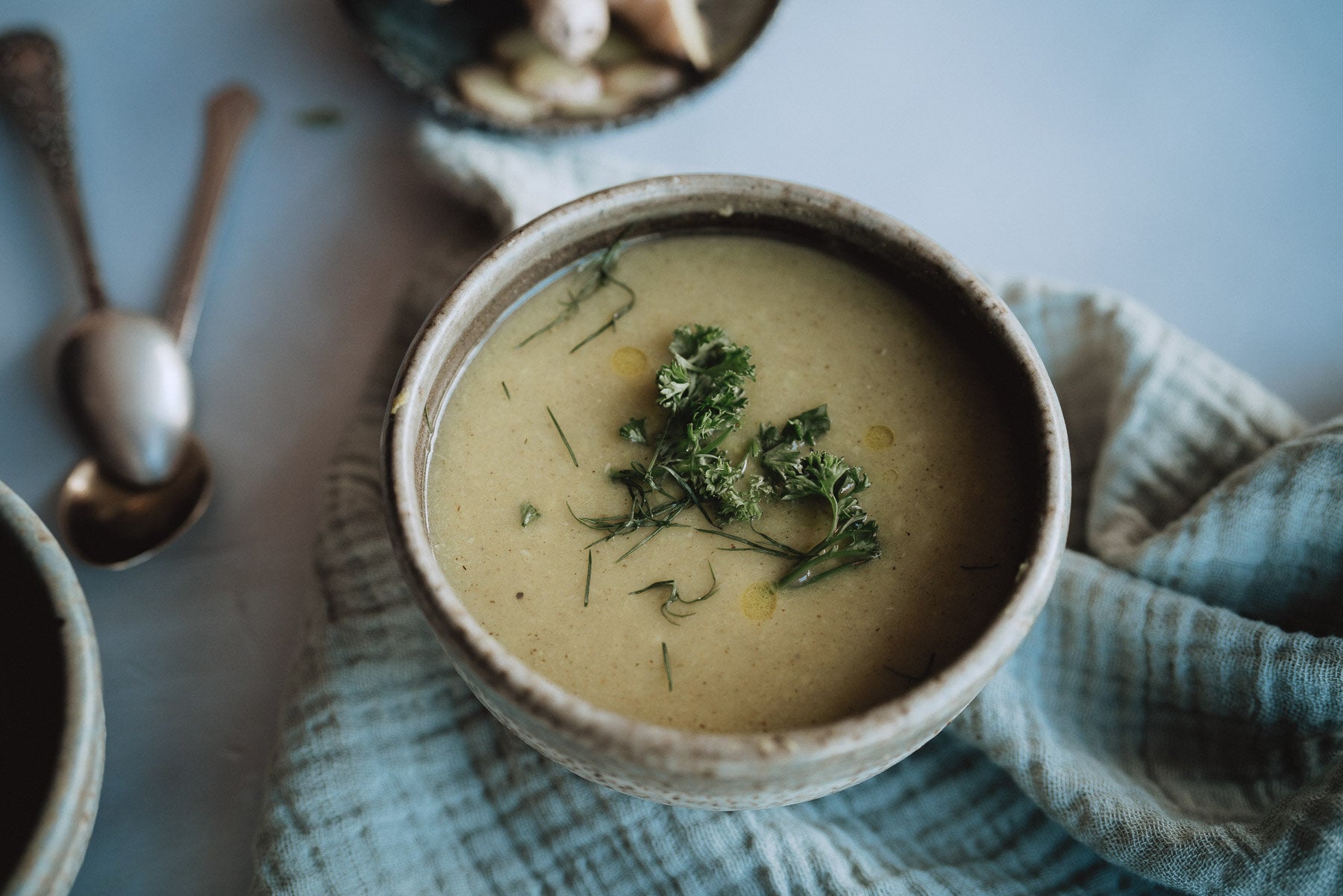
Do you feel like you get into a rut in the kitchen?
I hear this from clients pretty frequently – people tend to stick with what they know instead of trying new things, and then they get bored. And boredom can often lead to seeking pleasure by consuming overly stimulating or processed food, with negative consequences for digestion and overall well-being.
Making choices based on habit is to live from a place of unconsciousness. You’re doing something that feels familiar and safe without really considering it within the context of the present moment. Maybe you’re afraid to take a risk and make a mistake. Or perhaps you feel too tired or distracted to get creative. But this is a limiting way to approach cooking, and life in general. Always playing it safe leads to stagnation.
So how to transform your approach to cooking?
1. Let yourself be a beginner
Instead of letting fear run the show, try letting yourself be a beginner. A beginner will mess up, wobble and fumble. But with a playful attitude, a beginner can be wonderfully creative. It’s all about being willing to open up to new possibilities, and having faith that something great can happen.
2. Remember that creativity and simplicity can go hand in hand.
To be creative in the kitchen doesn’t necessarily mean that you need to come up with an extravagant or complex meal.
Remember that old adage, ‘necessity is the mother of invention’? What that implies is that you can actually come up with an interesting and unique result even with limited means. So when it comes to cooking, the same idea applies - you don’t need a whole lot of fancy ingredients to make something really satisfying, just some ingenuity and a positive attitude. If you’ve got good quality spices and oils on hand, you can craft simple meals that feature an array of beautiful tastes.
Split mung bean dhal. 108 simple ways.
‘Simple Ayurvedic Recipes 2: 108 Dhal Recipes For Healing’ highlights this union of creativity and simplicity. It’s a collection of delightful ways to spice a mung bean dhal with taste profiles drawn from some of my favorite cuisines around the world, including Italian, Japanese, Middle Eastern, Mediterranean, Mexican, Vietnamese, and even a few recipes inspired by a recent trip to New Zealand.
Creating the recipes in this book has been a great way to explore this idea that there are an infinite number of possibilities, each with a unique taste and different effects on the body. The key is being open and experiencing the process. I really let myself play, as a beginner, in the moment.
Why split mung?
Split mung beans are a cornerstone of Ayurveda because among all legumes they are the easiest to digest and the most nourishing.
Split mung beans play a key role in the Ayurvedic approach to eating because they are extractive, or cleansing in nature. This means that they draw out metabolic toxins from the digestive tract, and they break down the essential fats needed for healthy cellular function.
When you pair these legumes with augmenting foods like whole grains and sweet-tasting vegetables, as well as a handful of bitter vegetables, you’ll have yourself a complete, nourishing and satiating meal.
Yes, you can digest legumes!
I hear from clients that they avoid legumes, either because they aren’t sure how to cook them, or because they have difficulty digesting them - or both!
Legumes can be challenging for the digestion if agni, the digestive fire, is weak. However, there are often other issues at play. Sometimes people don’t cook legumes enough, nor spice them appropriately to support the digestive process. Often an imbalance in the doshas causes an imbalanced palate, which leads to excessive spicing or a focus on only a few tastes and flavors. And of course, simply eating too much in one sitting will cause a digestive disturbance.
However all of these situations are easily surmounted with the principles and practices of Ayurveda and ‘Simple Ayurvedic Recipes 2: 108 Dhal Recipes For Healing’ will show you how to do it with ease.
Visit our Ayurveda Lifestyle page for kitchen essentials
